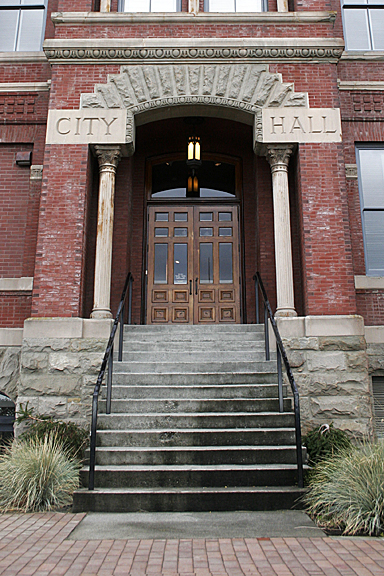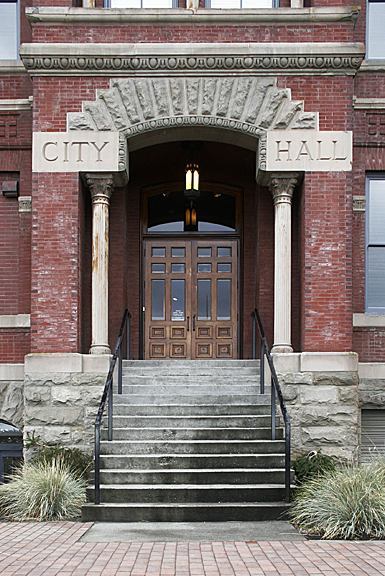Guest post by Aric Mayer.
Consider for a moment these two mundane photographs taken this morning. In their differences lies a subtle insight into the Western mind.
In the first image, the columns and porch are recorded looking up with the vertical lines receding away from the viewer and converging somewhere in space off the top of your screen. For the second image I have corrected this so the vertical lines are parallel. In both the brick in the foreground creates receding lines that emphasize the horizontal space moving away from the viewer. For the purposes of this post I will skip the technical means by which this is done in camera and instead focus on what this means for how we see.
To understand this better, let us travel back in time to the early fifteenth century when there comes into painting the theory of two point perspective. This opens up the world for realistic depictions of a single point of view. For the first time space is rendered as though it is being seen through a single eye, rather than through the multiple viewpoints of the previous ages. It is architecture that makes this possible, for the theory of two point perspective relies on the understanding that the world, or at least the man made world, is made up of parallel lines that remain equidistant from each other in reality and in perception appear to converge as they recede away in space.
If you spend time with paintings from the Renaissance to Modernity, you will see that the sophistication of the way space is rendered as it moves horizontally away from the viewer grows. But almost universally the vertical axes remain vertical. This corresponds to how we know the world to be. Up is up and down is down. But this is not how we see. If you stand at the base of a tall building and look at its middle, you will not see it as a rectangle, but more as a cone where the top is much smaller than the base. The vertical axes are not
straight up and down. They conform more to the way space is rendered in the first image.
Optically speaking, vertical axes are possible only when our eye is pointed directly at the horizon, thereby creating a balance between earth and sky, with each occupying an equal amount of perception. In this case the viewer is visually located between the two. To experience this personally, stand near the base of a tall building and look through the building towards the horizon. You will perceive with your peripheral vision that the vertical lines of the building above you do not converge but go straight up as we know them to do. The ground will also occupy about the same amount of perception as the building does. Perceiving vertical axes seems to ground us with a sense of balance.
Consider again the above images. The first image seems to dominate the viewer, looming slightly while the second is arranged in the picture frame in balance as we know the building to likely exist. The feeling is subtle but distinct in its difference. As you look at photographs, pay attention to how these axes are recorded. They can be manipulated to create different senses of space and feeling within the image.


Discussion